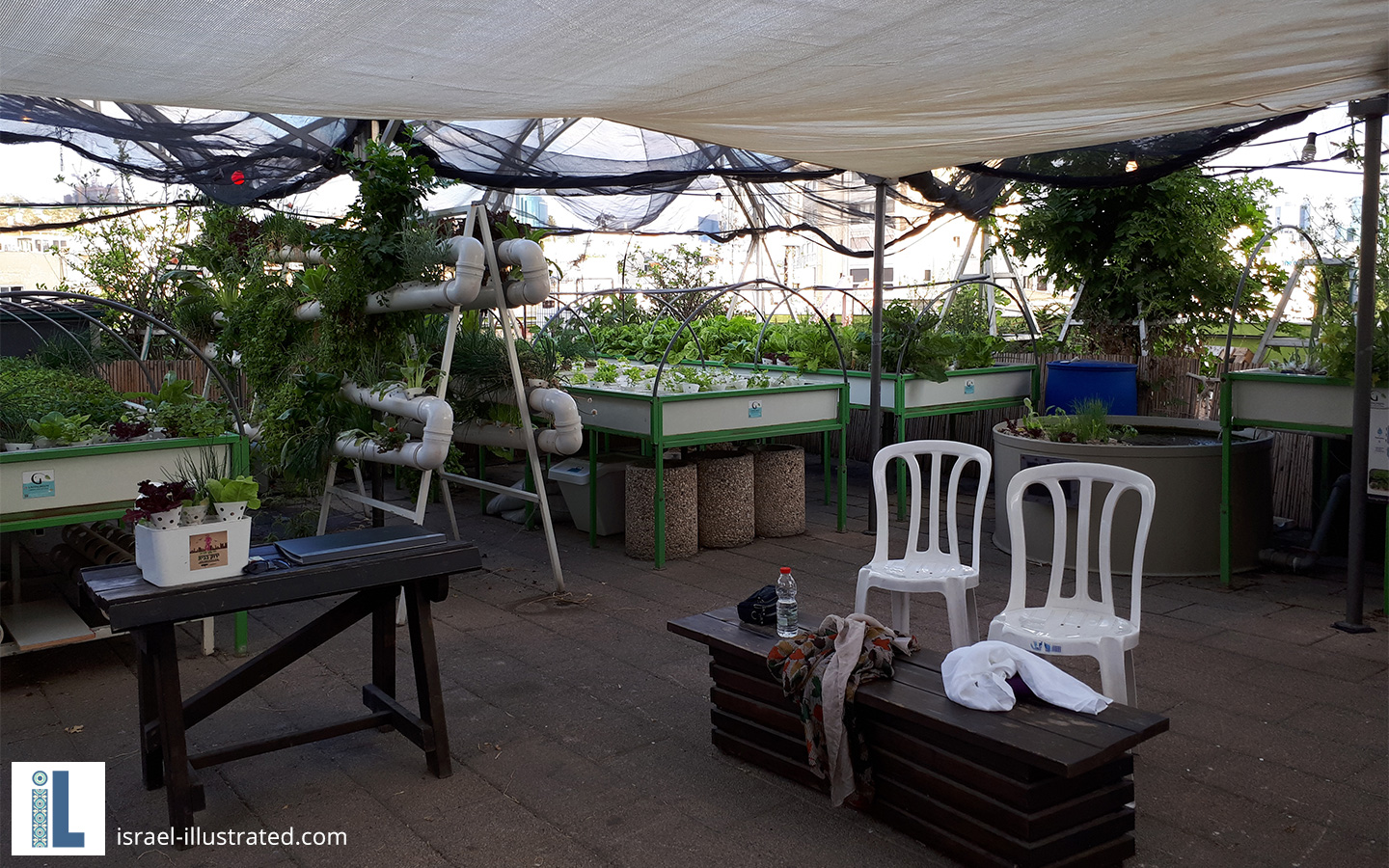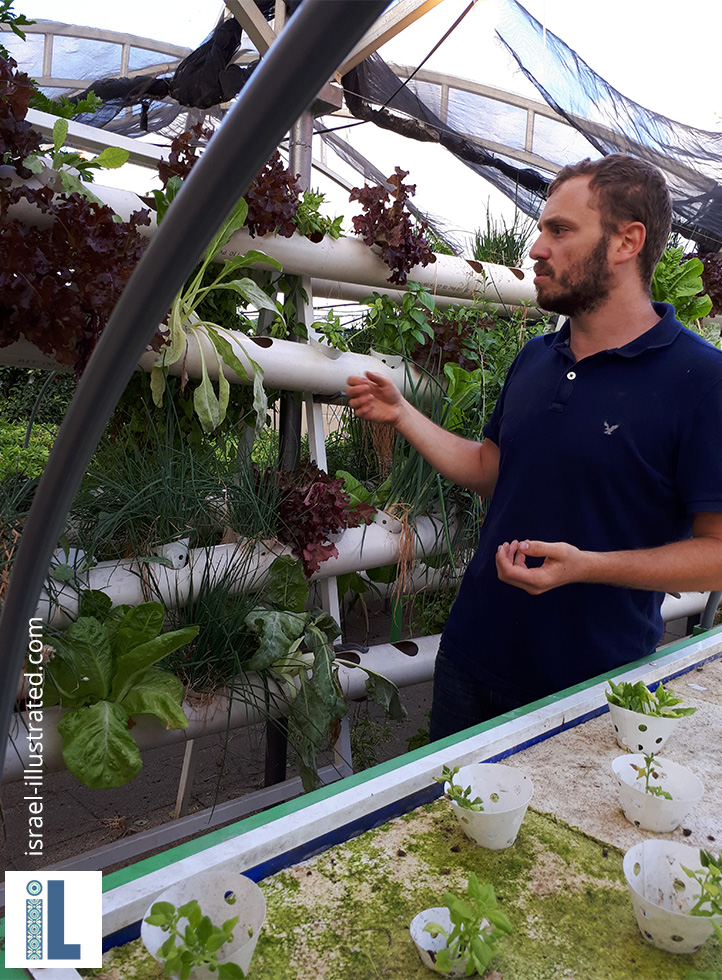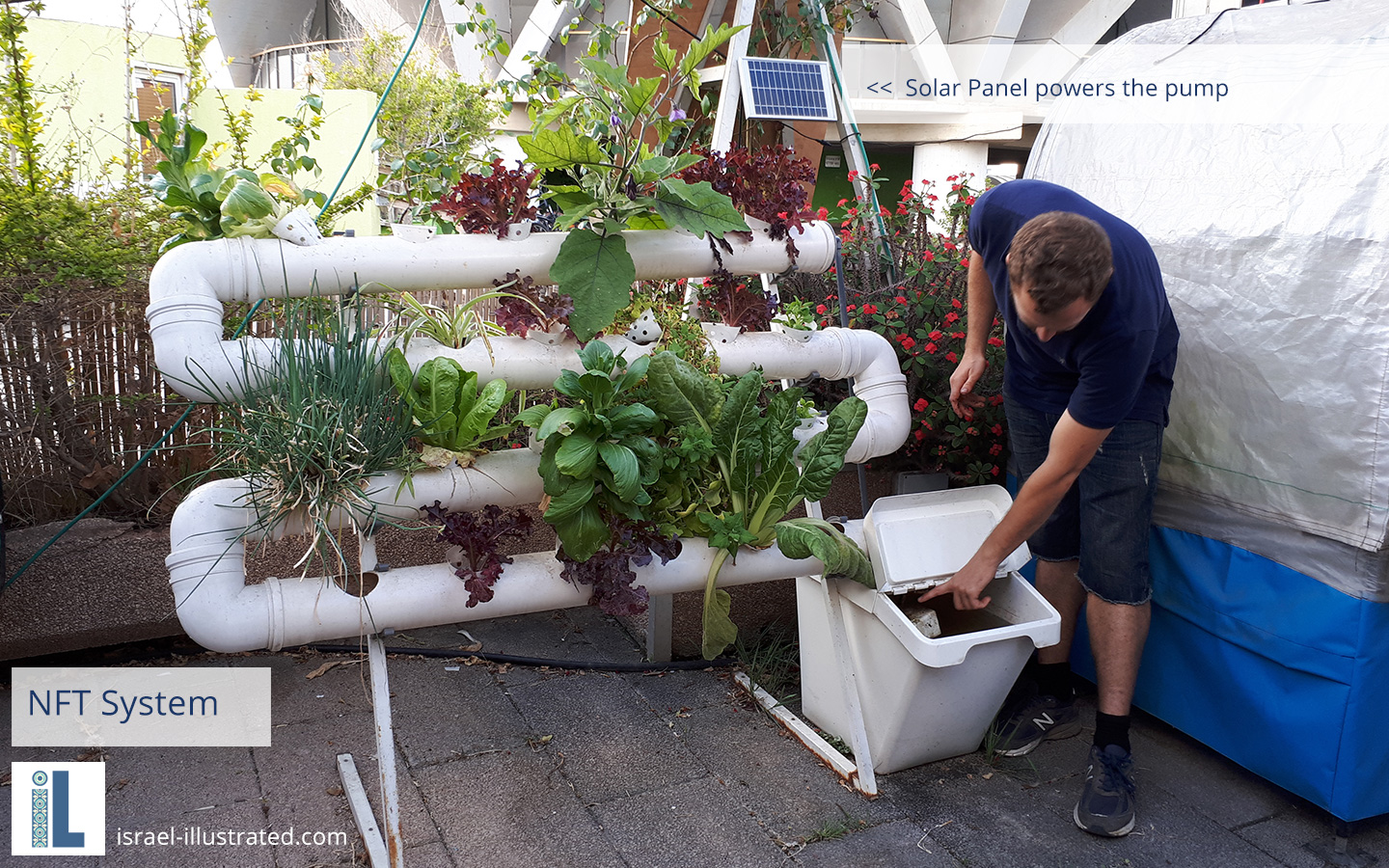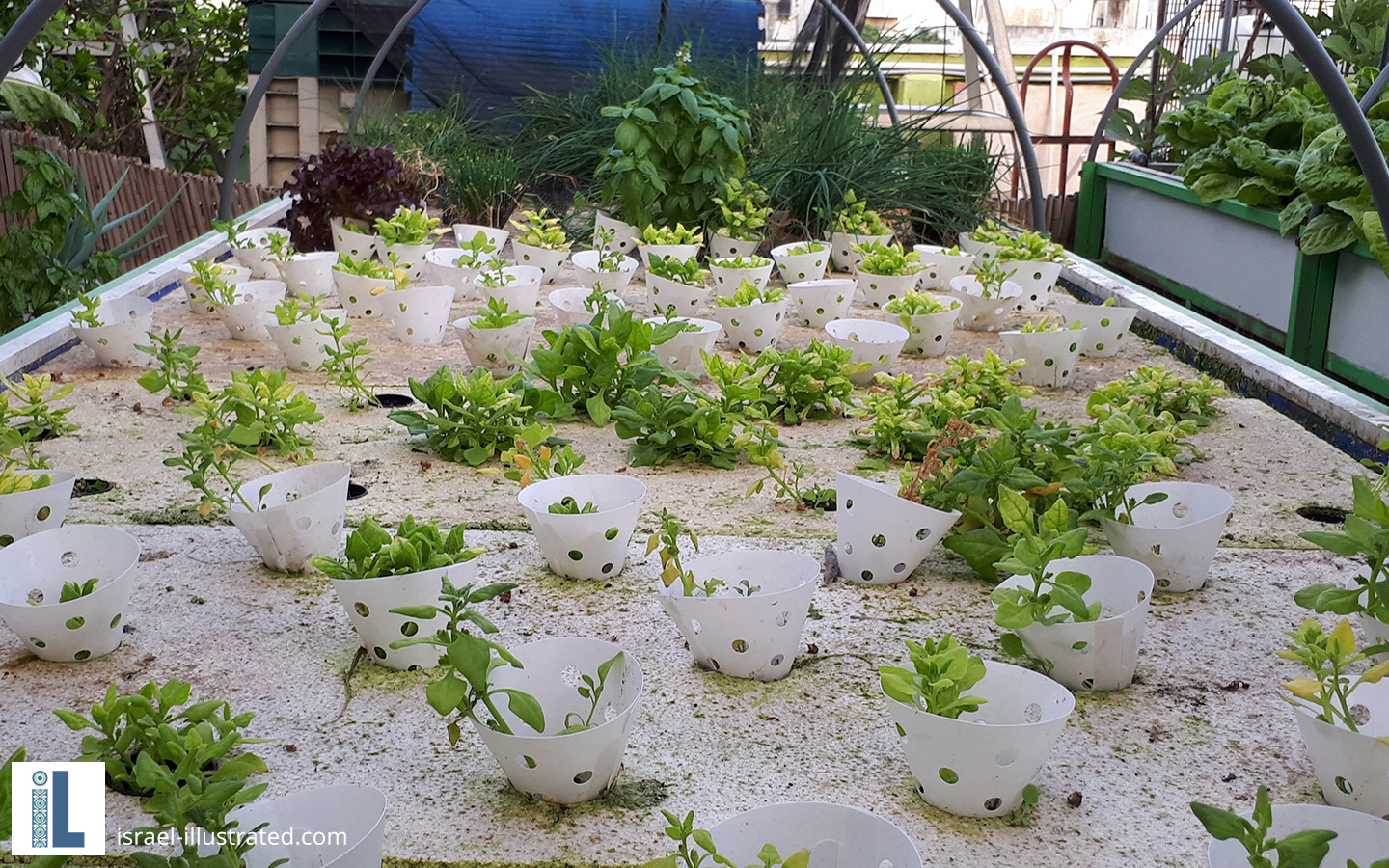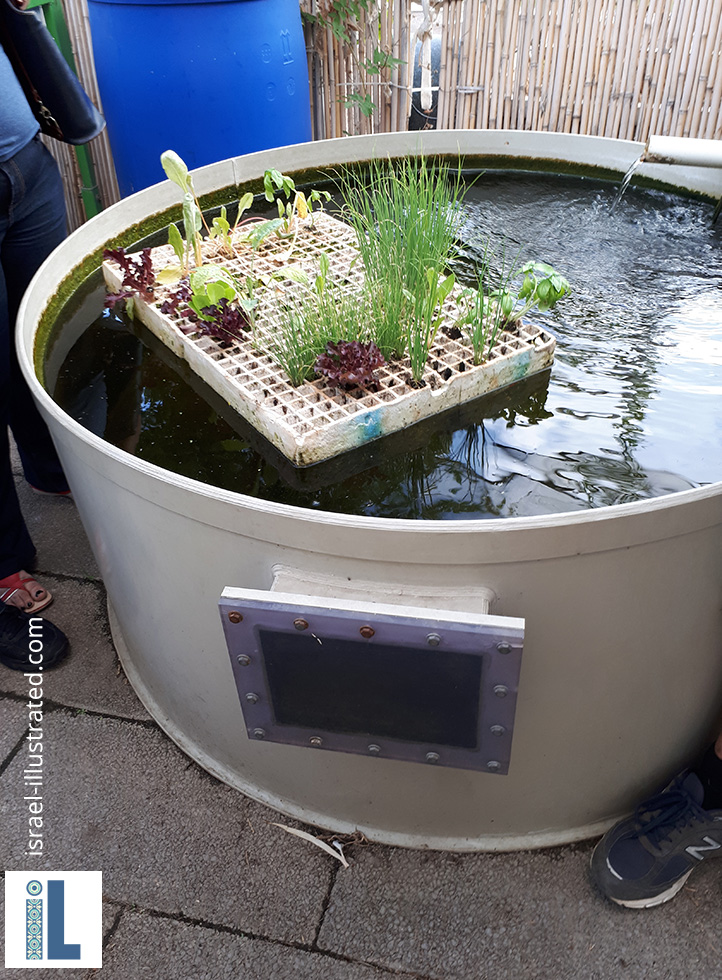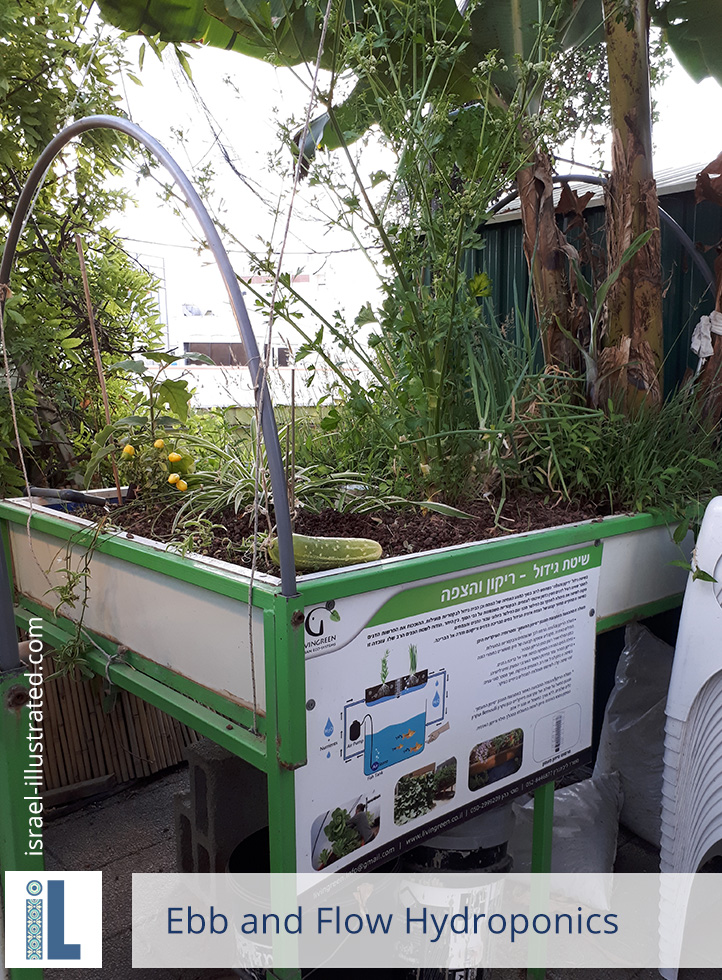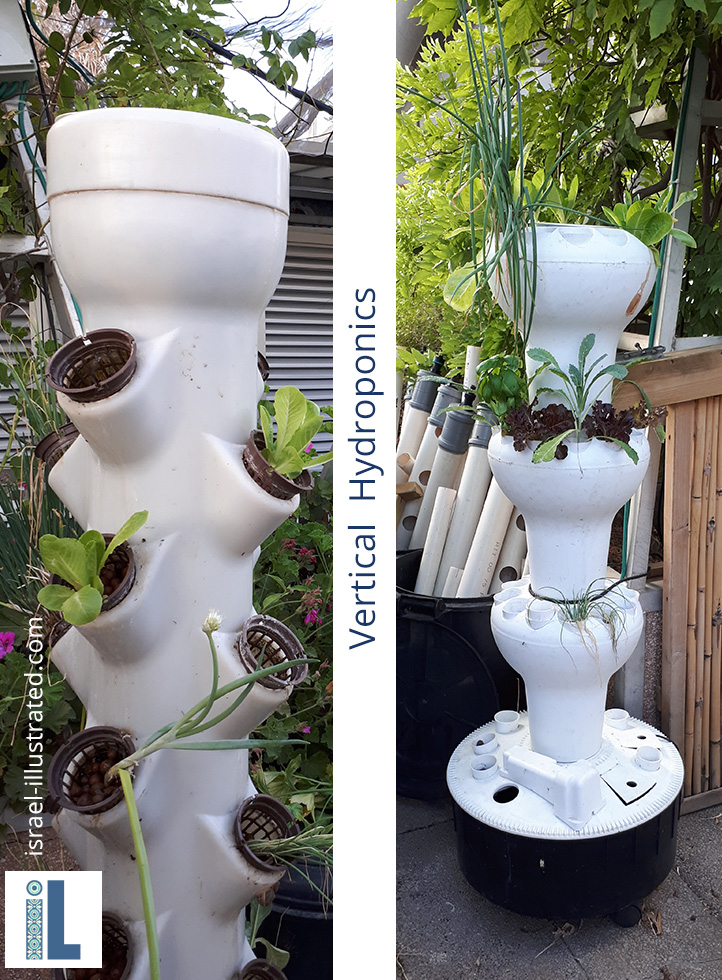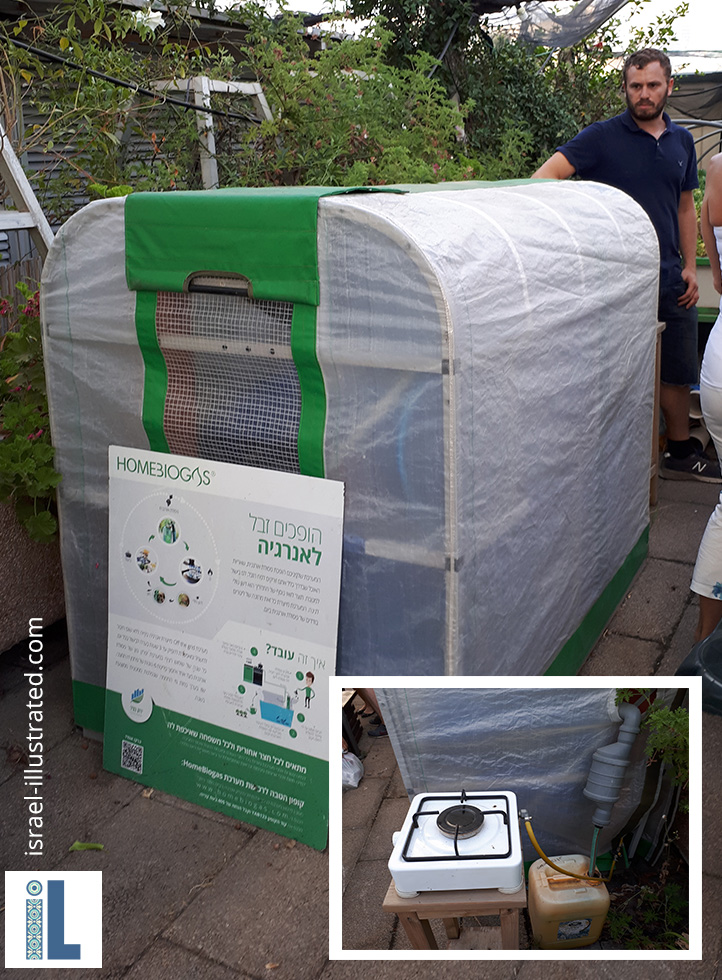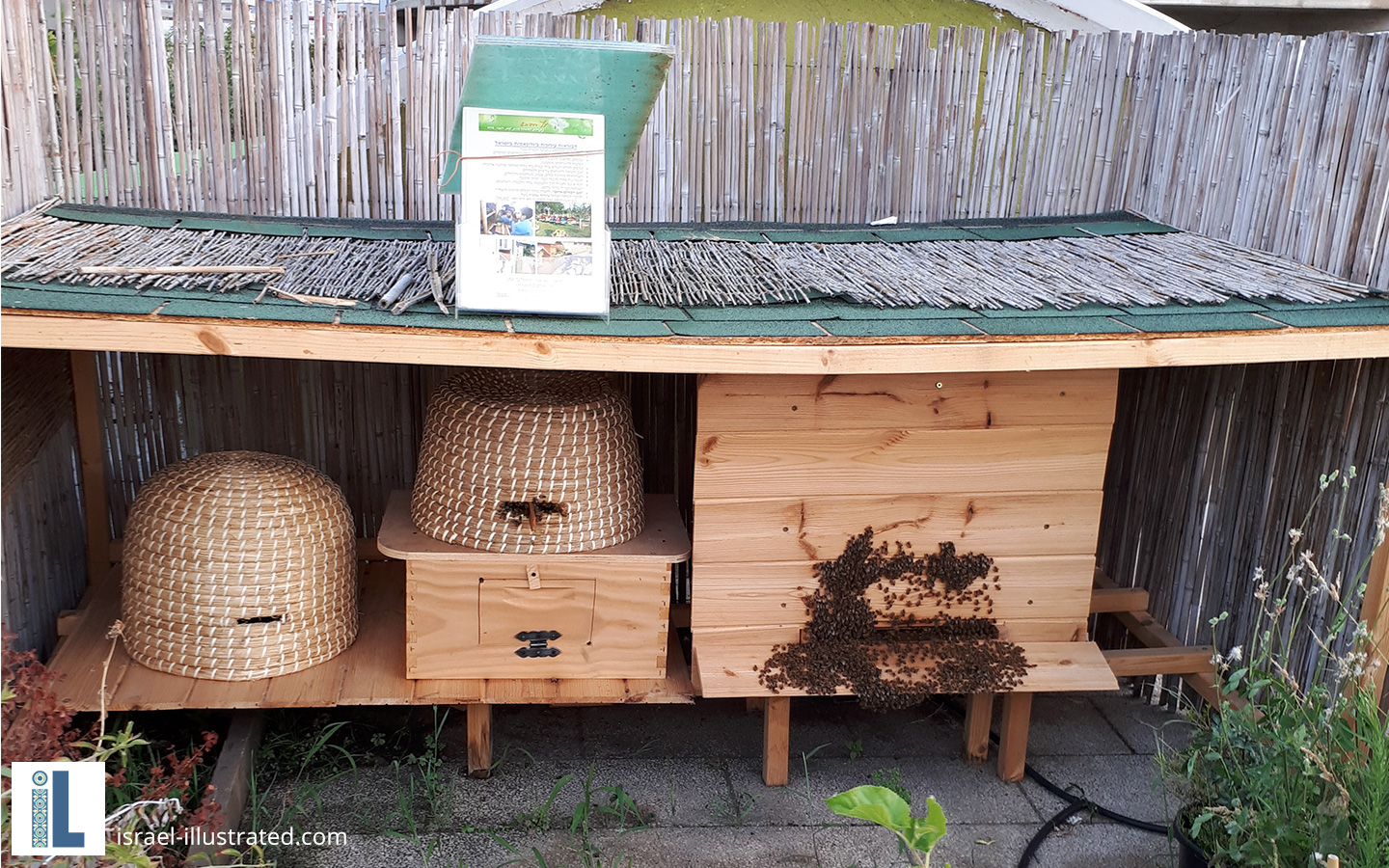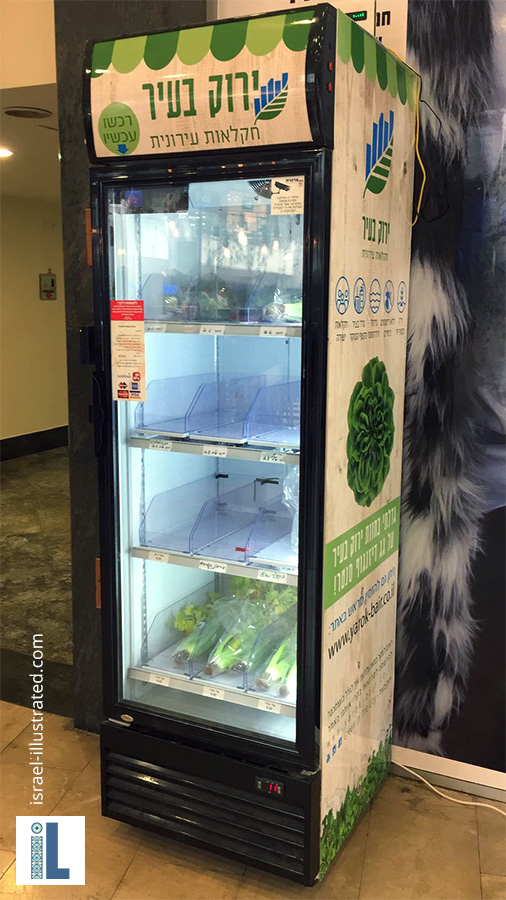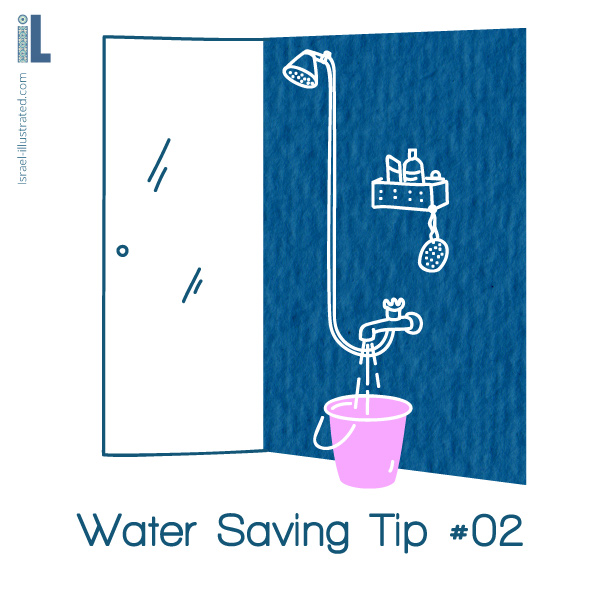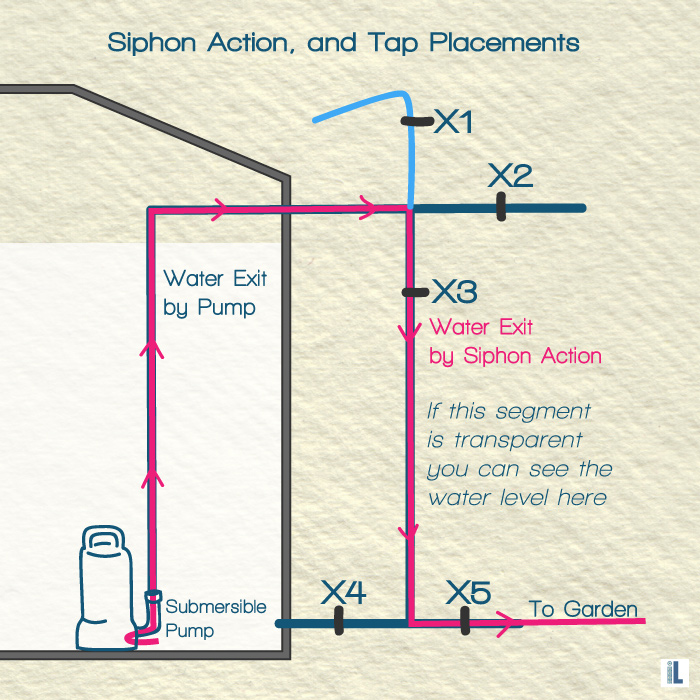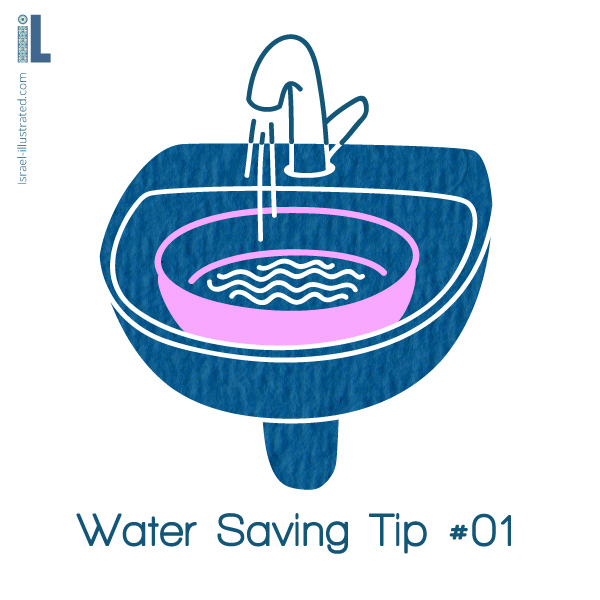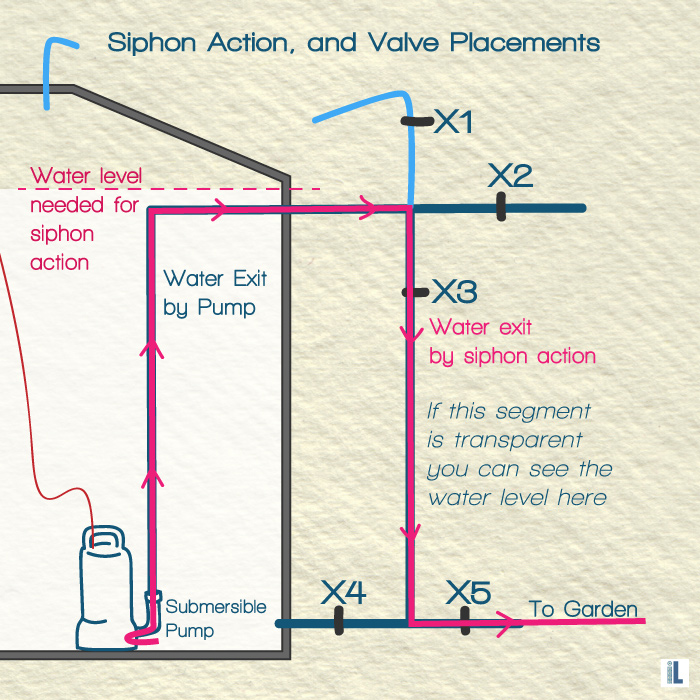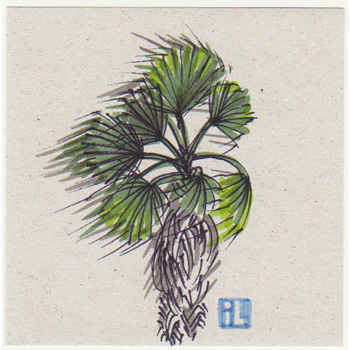Hydroponic Farming
on the Tel Aviv Rooftops
There's a green surprise on the rooftop of Tel Aviv's first shopping mall:
A big Hydroponic Farm.
I found it one day when I had to resort to parking in one of the winding, narrow branches of the roof's parking lot. I looked up and realized I was parked alongside a large greenhouse: a hydroponic greenhouse. Plants that grow on water only, with no soil - vertically!
They call it "City Farming".
I was so delighted to stumble on to this, I just had to find out more, so I signed my family up to one of their tours.
Yarok Bair (meaning -"Green In The City") is an urban farming complex on Dizengof Center’s rooftop. They have a commercial Hydroponic farm that - so I learned - supplies leafy greens and herbs to the mall's cafés. They also have a learning center; a tree nursery, and they work together with a City Bee Farm set up right next to them.
We were a cheerful group of ten people, all ready to learn about Hydroponic farming.
The most stunning fact I learned was that growing plants in hydroponic methods can save as much as 80% or even 95% of the water that it would take to grow these plants in a regular earthy farm!
How Hydroponics Work
The basic idea is to grow plants without soil.
Plants can grow on water alone, with the nutrients solved into it.
You need a structure to hold the plant, and a source for the nutrients, and these come in various shapes.
Our friendly guide showed us different examples:
Horizontal Pipes using the Nutrient Film Technique
In this method, the plants sit in a gentle nutrient-water stream that flows thru a horizontal but slightly tilted pipe.
The roots come in direct contact with the water, that flow in a closed circuit along the bottom of the pipe. Each plant sits in a little cone that supports it in hole cut into the pipe.
The water gets naturally oxidized when it mixes with the air in the pipe as it flows thru the system.
The pipe system is stacked vertically!
It saves a great deal of space, making for a three-dimensional farm :-)
We saw two types of systems:
One was connected to a fish pond.
The bio waste from the fish provided the nutrients in the water.
Water from the fish pond needs to be filtered first, physically and biologically.
The second was an independent unit, where a human needs to add fertilizer to the water. The pump circulating the water runs on solar energy – perfect for a sunny country.
Deep water tank raft
This is a big tub, filled with a nutrient solution.
Floating on top of this is a Styrofoam sheet, with holes cut into it.
In each hole you place one plant.
It's counter intuitive, but this static, covered water tank is extremely water-efficient. You monitor the level of nutrients, re-supplant the solution once a week or so,
and use a TENTH of the amount of water you'd need to grow this in an earth farm.
The guide lifted the Styrofoam sheet and showed us the two challenges with this technique:
First, you need to aerate the water.
What they do is place the Styrofoam board a bit higher than the water surface. This way the plant's roots get exposed to the air and get their oxygen this way. Another way to aerate the water is use an aquarium pump.
The second challenge is algae.
If sunlight makes it beneath the Styrofoam algae immediately starts growing. It competes with the plants over nutrients and clogs the system. There're a number of ways to combat this, most of them aiming to limit the waters' exposure to sunlight.
From there we went to see the fish tank:
Ebb and Flow - Hydroponic Farming with... fish!
The learning center area was covered with nets.
We asked, is this to keep birds out?
No, said the guide, it's to keep the flies out.
When we got to the fish tank I figured I understood: it smells.
There, I said it :-)
Other than the odor, this is a wholesome, well rounded and self sufficient ecological system.
They have a fish pond. The fish swim around, doing their fishy things, and excrete fish-manure.
Water from the fish tank is sent to the Ebb and Flow setup, a two-storied structure standing near the pond.
The top level is a basin filled with clay pellets, or "Tuf".
In Israel this comes from the volcanic rocks of the Golan Heights. It's a very porous material, popular as a garden filler. There was some coconut straw mixed with the pellets.
A whole culture of different and rather large plants lives in the top basin. Their roots tangle and weave thru the pellets, which serve as a ground to hold on to.
Now here's the elegant part:
Beneath the plant basin, is a water basin, filled with the fishy water.
A combination of physical principles, such as the Bernoulli Principle and siphon action, cause the water from the bottom basin to get pushed up into the growing basin – with no external power. No electricity, no human work needed!
The water flows up into the top growing basin, flooding it.
The Tuf pellets filter the fishy water for both the plant's and the fish's benefit.
When the basin fills up, a bell-siphon causes the water to drain back down to the bottom basin.
This cycle of water keeps the plant's roots fed, watered and aerated regularly, and filters the water for the fish, who in turn create more nutrients for the plants, and we've come full circle in this beautiful ecological cycle.
Vertical hydroponics Farming
and Hydroponic Grow Kits
Once you get the basic principle, you realize there's an infinite variety to hydroponic farming.
You can easily start small in your own home.
How about this vertical stack:
It's filled with Tuf or clay pellets, the nutrient solution flows and moves in the stack by capillary suction, and it's a great way to grow lettuce and herbs using as little water and space as possible.
At the Yarok Bair website you can order two types of kits:
A Small box for growing herbs,
And an NFT pipe system that you can put on your rooftop or porch and start your own city farming.
Bio-Gas
Other than direct hydroponics the learning center also had a composter tent that makes BioGas.
It's an off-the-grid, independent system:
- You collect the organic waste at you home, say a bucket a day.
- Bacteria in the HomeBioGas digestion tank break up the organic waste, creating Methane bio-gas.
- The bio-gas is filtered to remove bad odors.
- The methane bio-gas is collected to a gas tank, connected to your home cooking system, providing you with about 3 hours a day of fire for cooking!
- Additionally, a by product of this system is liquid fertilizer, that you can use in your hydroponic garden :-)
Bees and Trees in the middle of the city
Just outside the Yarok Bair learning center there's a tree nursery, and a City Bee Hive.
I was so happy to see the bees.
The Bio-Dynamic Urban Bee Growing Center for the Dan area is an attempt to help the bee population and restore them, especially in this dense metropolis.
The buzzing bees were a lovely finale to our hydroponics tour.
I wish all the rooftops in Tel Aviv would adopt a bee and a tree.
Visiting Tel Aviv?
Book a visit in Yarok Bair (Green In The City) Hydroponics Center.
Back down inside the shopping mall we found the Green In The City Refrigerator:
Everyday, the Dizengof Center's Hydroponic Farm puts out fresh produce in the fridge. You can come a buy hydroponic greens directly from the source!
There's no cashier, only a credit card slot.
Swipe your card, enjoy a clean world.
Utopia anyone?
Follow Me on Instagram:
https://www.instagram.com/nettacanfi/
